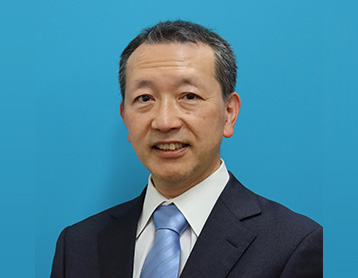第51回 日本整形外傷学会学術集会
The 51st Annual Meeting of the Japanese Orthopaedic Trauma Association
President's Greeting

President, The 51st Annual Meeting of the Japanese Orthopaedic Trauma Association (JOTA)
Koichi Inokuchi, M.D., Ph.D.
Director of Trauma Center, Saitama Medical Center, Saitama Medical University
It is our great honor to host the 51st Annual Meeting of the Japanese Orthopaedic Trauma Association (JOTA) on June 27 (Friday) and 28 (Saturday), 2025, at PACIFICO Yokohama in Yokohama City.
This academic society began as the first Fracture Research Meeting on April 15, 1978, later evolving into the Japanese Fracture Research Society in 1982 and then the Japanese Society for Fracture Repair in 1992. In 2025, the society underwent a name change to the Japanese Orthopaedic Trauma Association, marking a significant new chapter in its history. It is a great privilege—and a heavy responsibility—to organize this commemorative annual meeting in such a milestone year.
The theme of this year’s meeting is “Resonance.” We must address niche and complex clinical areas in response to the shift from fracture repair to comprehensive orthopaedic trauma care. It will be essential to achieve resonance with other medical fields, emergency and critical care departments, geriatrics and internal medicine, or vascular and plastic surgery for revascularization. Moreover, as workstyle reforms accelerate, we must promote task-sharing and task-shifting, and embrace AI to improve efficiency. In this regard, fostering “resonance” with other industries is also an urgent task. Considering these perspectives, we have organized nine “Resonance Sessions” for this year’s meeting.
Regarding the institutionalization of trauma centers, the orthopaedic trauma community in Japan has yet to take unified action. Should we continue on this path? To spark discussion, we have invited Professor C.G. Moran, who was pivotal in establishing the Major Trauma Centre system in the UK, as an advisor. During the meeting, we will present the results of a survey conducted among council members and use this as a foundation to engage in dialogue about the role and commitment of orthopaedic trauma surgeons. This initiative will be featured as Forum 1: “The Future of Orthopaedic Trauma Centers,” scheduled on the afternoon of Day 1.
The scientific program is packed with highlights, including a keynote lecture, invited lecture, cultural lecture, and debate session. There will also be three forums, 12 symposia, nine panel discussions, and two spine trauma sessions. In addition, we are pleased to welcome distinguished international speakers: two from IOTA, four from AO, and the presidents of KFS and TOTS.
We have also received a large number of submissions. The final selection includes 796 presentations—spanning award sessions, themed sessions, general papers, posters, and English-language sessions. I want to express my heartfelt gratitude to all contributors. Furthermore, educational lectures will be available on-demand, allowing participants to earn specialist credits even if they cannot attend in person.
This year’s meeting will offer young surgeons and residents various opportunities to deepen their knowledge. We have prepared rich content, including the “Fracture Wrestling,” “Fracture Treatment Terakoya,” and “Fracture Prep School” sessions. The multipurpose room will also host 13 hands-on sessions, providing a unique learning environment. We hope to inspire many young doctors to choose orthopaedic trauma as their subspecialty through these activities.
It is not only the younger generation that must grow—we, too, must continue evolving. There is still untapped potential within us. If this meeting ignites a spark in your heart or leads to new insights, there is no greater reward. I sincerely hope you will enjoy these two exciting days.
We look forward to welcoming physicians, nurses, healthcare professionals, and researchers from engineering and other disciplines all over Japan. Thank you for your kind participation.
